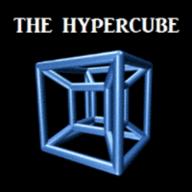Plz help me for the two CE A.Maths questions
1. from 98
Only need part (c) and (d)
answers for (a): x=2sin (5pi/6 - θ) and y=2sinθ
answer for (b): S is maximum when θ= 5pi/12
2. from 99
only need part (d)
answer for (a): h = V/(pi x^2)
answer for (b): x^3 = V/(2k pi)
answer for (c)(i): x=4 and h=16
answer for (c)(ii): Base radius decrease and height increase
Questions are as follow
圖片參考:http://imgcld.yimg.com/8/n/HA00656648/o/701207180051913873412770.jpg
A.Maths Qs x2
2012-07-19 1:05 am
回答 (1)
2012-07-19 5:58 am
✔ 最佳答案
Can you scan again to make the words larger?2012-07-18 21:58:14 補充:
Year 98)a) x = sin(π - ⅙π - θ)/sin⅙π = 2sin(⅚π - θ); y = sinθ/sin⅙π = 2sinθb) S = ½[2sin(⅚π - θ)](2sinθ)sin⅙π = sin(⅚π - θ)sinθdS/dθ =sin(⅚π - θ)cosθ - sinθcos(⅚π - θ) = sin(⅚π - θ - θ) = sin(⅚π - 2θ)When S is maximum, dS/dθ = 0.sin(⅚π - 2θ) = 0 ⇒ ⅚π - 2θ = 0 ⇒ θ = 5/12 πWhen θ = 5/12 π, d²S/dθ² = 2cos(⅚π - 2θ) = 2cos0 = 2 > 0∴ S is maximum when θ = 5/12 πc) x =2sin(⅚π - θ) ⇒ dx/dθ = - 2cos(⅚π - θ)⇒ dx/dt = - 2cos(⅚π - θ)dθ/dt --- (i)y = 2sinθ ⇒ dy/dθ = 2cosθ ⇒ (dy/dt)/(2cosθ) = dθ/dt --- (ii)Substitute (ii) into(i), dx/dt = - 2cos(⅚π - θ)(dy/dt)/(2cosθ)⇒ dx/dt = - cos(⅚π - θ)/cosθ (dy/dt)d)If the student is correct, there exist a value of θ so that dx/dt = 0 dx/dt = - cos(⅚π - θ)/cosθ (dy/dt) = 0 ⇒ cos(⅚π - θ) = 0 ⇒ θ = ⅓π∵ 0 < ⅓π < 4/9π, ∴ Such θ exist.When ⅓π < θ < 4/9π, cos(⅚π - θ) > 0. When 0 <θ < ⅓π, cos(⅚π - θ) < 0.dy/dt always < 0.∴ dx/dt > 0 when ⅓π < θ < 4/9π, < 0 when 0 < θ < ⅓π.∴ A move away from O at first (dx/dt > 0) andmove towards O later (dx/dt < 0)∴ The student is correct. Year 99)a) i) h = V/(πx²); ii) C = 2πxh + 2(πx²)k = 2V/x + 2πkx²b) C =2V/x + 2πkx² ⇒ dC/dx = - 2V/x² + 4πkx = 0⇒ 4πkx = 2V/x² ⇒ x³ = ½V/(πk) ⇒ x³ = ½πx²h/(πk) ⇒ x/h = ½kd²C/dx² = 2V/x³ + 4πkWhen dC/dx = 0, d²C/dx² = 2V/[½V/(πk)] + 4πk = 8πk∴ C is minimum when x/h = ½k.c) i) x³ = ½V/(πk) = ½(256π)/(2π) = 64 ⇒ x = 4; 4/h = ½ × 2 ⇒ h = ¼ii) C = 2V/x +2πkx²; When k increases, x decreases.Thecan become narrower and taller (x decreases and h icreases).d) The worker is wrong because required ratio shouldbe equal to the original one (x/h = ½k). HOPE THIS CAN HELP YOU!PLEASE FEEL FREE TO ASKAGAIN IF YOU STILL HAVE ANYPROBLEM!~ ^_^
2012-07-19 00:07:20 補充:
It's because both the new and old can can share all things in part a) and b),
so their ratio of the base radius to the height should be the same (they are
similar).
2012-07-19 12:55:04 補充:
CORRECTION
Year 1999 c) ii)
4/h = ½ × 2 ⇒ h = ¼
->
4/h = ½ × 2 ⇒ h = 16
參考: My Maths World
收錄日期: 2021-04-13 18:49:52
原文連結 [永久失效]:
https://hk.answers.yahoo.com/question/index?qid=20120718000051KK00519

